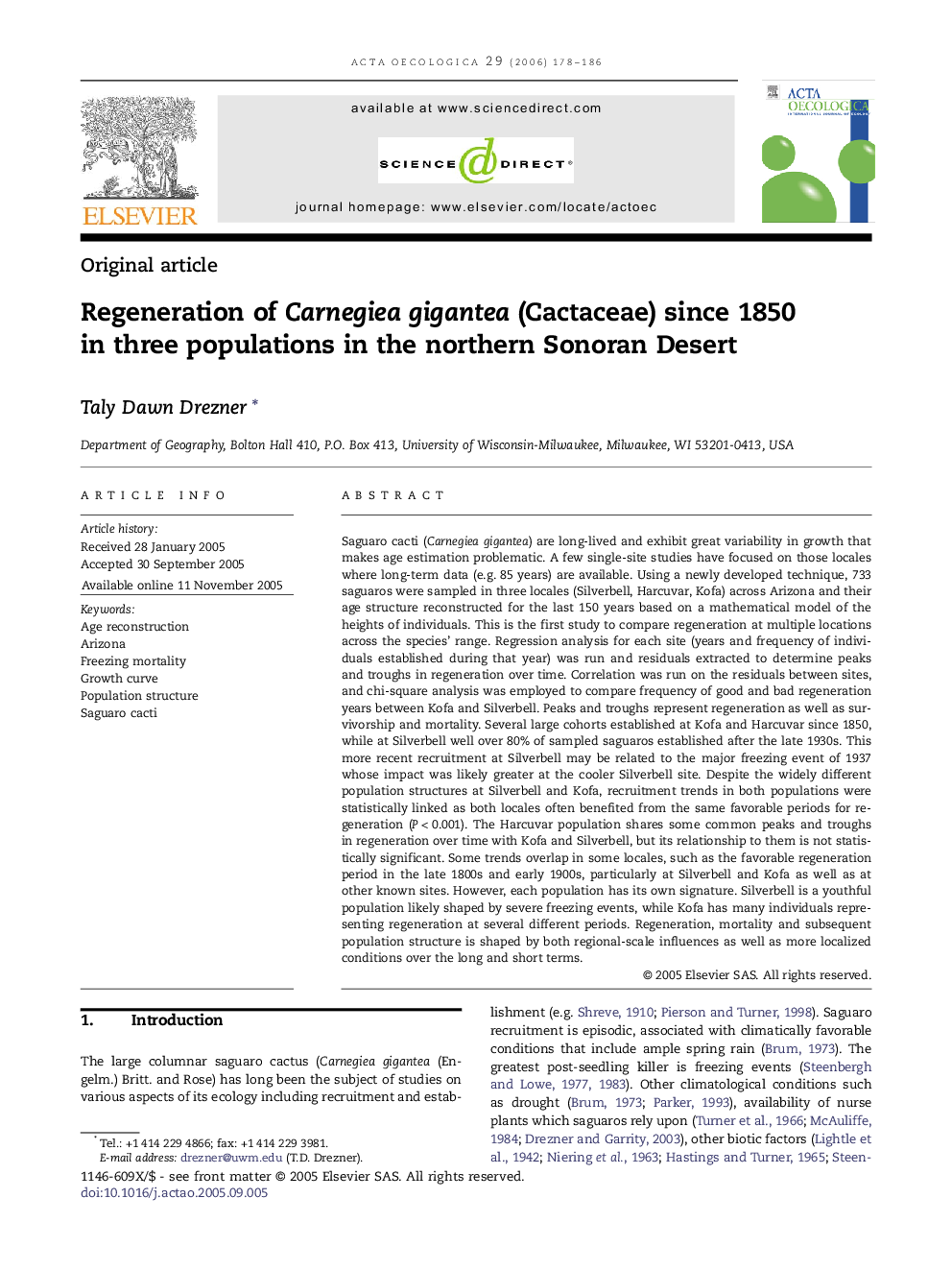| Article ID | Journal | Published Year | Pages | File Type |
|---|---|---|---|---|
| 4381317 | Acta Oecologica | 2006 | 9 Pages |
Abstract
Saguaro cacti (Carnegiea gigantea) are long-lived and exhibit great variability in growth that makes age estimation problematic. A few single-site studies have focused on those locales where long-term data (e.g. 85Â years) are available. Using a newly developed technique, 733 saguaros were sampled in three locales (Silverbell, Harcuvar, Kofa) across Arizona and their age structure reconstructed for the last 150Â years based on a mathematical model of the heights of individuals. This is the first study to compare regeneration at multiple locations across the species' range. Regression analysis for each site (years and frequency of individuals established during that year) was run and residuals extracted to determine peaks and troughs in regeneration over time. Correlation was run on the residuals between sites, and chi-square analysis was employed to compare frequency of good and bad regeneration years between Kofa and Silverbell. Peaks and troughs represent regeneration as well as survivorship and mortality. Several large cohorts established at Kofa and Harcuvar since 1850, while at Silverbell well over 80% of sampled saguaros established after the late 1930s. This more recent recruitment at Silverbell may be related to the major freezing event of 1937 whose impact was likely greater at the cooler Silverbell site. Despite the widely different population structures at Silverbell and Kofa, recruitment trends in both populations were statistically linked as both locales often benefited from the same favorable periods for regeneration (PÂ <Â 0.001). The Harcuvar population shares some common peaks and troughs in regeneration over time with Kofa and Silverbell, but its relationship to them is not statistically significant. Some trends overlap in some locales, such as the favorable regeneration period in the late 1800s and early 1900s, particularly at Silverbell and Kofa as well as at other known sites. However, each population has its own signature. Silverbell is a youthful population likely shaped by severe freezing events, while Kofa has many individuals representing regeneration at several different periods. Regeneration, mortality and subsequent population structure is shaped by both regional-scale influences as well as more localized conditions over the long and short terms.
Related Topics
Life Sciences
Agricultural and Biological Sciences
Ecology, Evolution, Behavior and Systematics
Authors
Taly Dawn Drezner,
